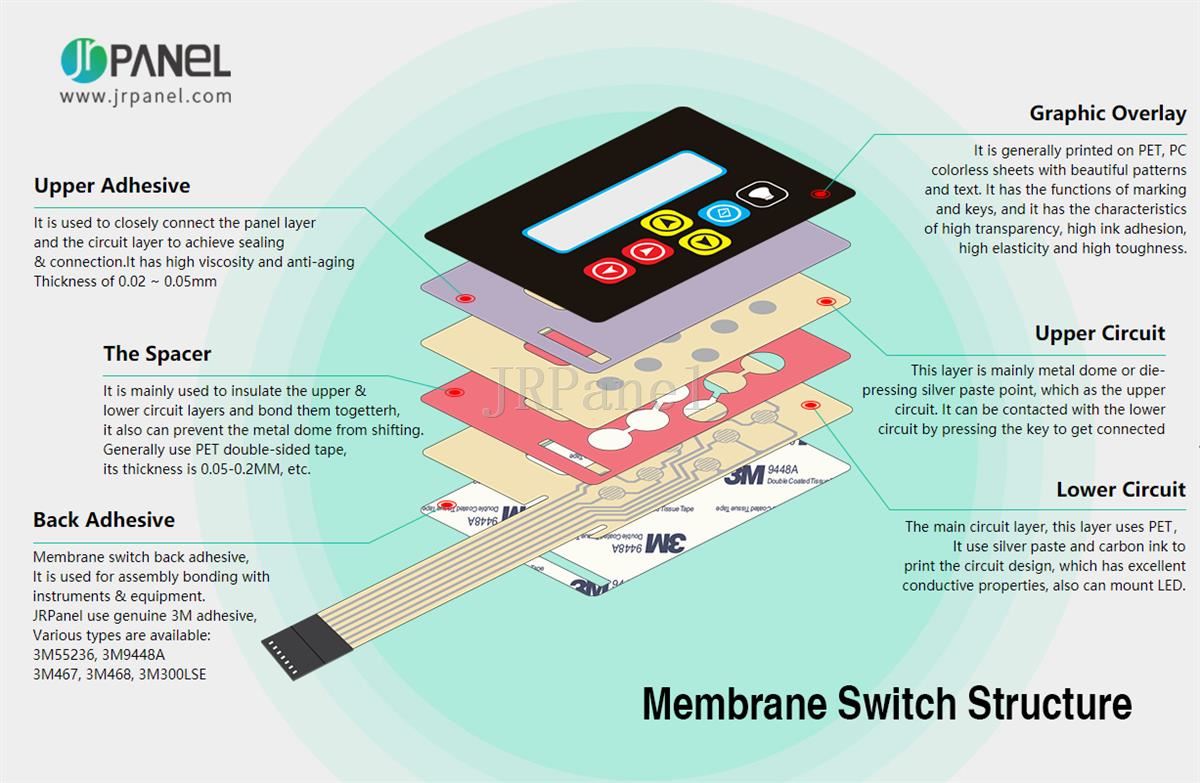Comprehending the Capability of Membrane Layer Switches for User User Interface Instruments
The capability of membrane switches over represents a substantial development in user interface style, combining efficiency with visual flexibility. These buttons run through a multi-layered framework that converts individual communications right into electrical signals, permitting both compact formats and durability against ecological factors. As sectors progressively focus on customer experience, comprehending the subtleties of membrane layer button technology comes to be vital. What implications do these developments hold for future applications, and just how might they redefine individual communications across different devices?
What Are Membrane Switches?
Membrane buttons are ingenious interface gadgets that assist in individual interaction with electronic equipment. These functional components contain multiple layers, including a visuals overlay, spacer, and a published circuit layer. The style allows for a seamless combination right into different digital tools, improving both the aesthetic and functional facets of interface.
Membrane layer buttons are generally utilized in a wide variety of applications, from household appliances to industrial equipment and clinical devices. Their construction typically features a slim account, making them a suitable option for small designs. The tactile responses supplied by these buttons can be crafted to satisfy particular user choices, guaranteeing reliable communication between the user and the tool.
Sturdiness is another substantial advantage of membrane layer switches, as they are resistant to dirt, dampness, and chemicals, which enhances their life-span sought after settings. Additionally, these switches can be customized in regards to form, size, and visuals design, enabling for branding and user-specific features. Generally, membrane switches over stand for a practical service for boosting user experience in electronic tools, integrating performance with visual charm in a reliable way.
Exactly How Membrane Switches Job
Operating on a simple concept, membrane switches use a split building and construction to sign up user input successfully. Each switch contains numerous layers, including a published circuit layer, a spacer layer, and a top graphic layer, which are designed to work with each other seamlessly. When an individual presses the leading layer, it compresses the spacer layer, bringing the conductive components of the circuit layer into contact with each other.
This call creates a closed circuit, signifying the device to perform a details function. The design permits numerous configurations, including responsive responses, which can enhance the individual experience by supplying a physical experience upon activation. The materials used in membrane buttons usually include flexible substrates, such as polyester or polycarbonate, which make sure durability and resilience against deterioration.

Trick Benefits of Membrane Buttons

Another considerable benefit is their density. Membrane buttons are slim and navigate to this site lightweight, which makes it possible for makers to save space in their tools without compromising capability. This function is particularly valuable in applications where weight and volume are critical factors to consider.
Additionally, membrane switches are resistant to dust, moisture, and chemicals, improving their toughness. This durability expands their life-span and decreases the need for frequent substitutes, resulting in expense financial savings gradually.
In addition, the tactile feedback offered by membrane layer buttons can be optimized to improve customer interaction. They can include functions such as elevated buttons or audible clicks, enhancing use and user experience.
Applications Across Industries
Interface devices utilizing membrane layer buttons are prevalent in a large selection of industries, showcasing their versatility and capability. Membrane Switch. In the clinical sector, membrane switches are indispensable to tools such as diagnostic equipment and individual surveillance systems, where their resilience and simplicity of cleansing are critical for maintaining hygiene standards. In the auto industry, these buttons are employed in dashboard controls and infomercial systems, providing a streamlined and modern-day user interface for customers.
Additionally, the customer electronics sector advantages from membrane layer buttons in devices and portable gadgets, where small style and easy to use interfaces enhance user experience. Industrial applications also utilize membrane switches for control panels in machinery and automation systems, emphasizing their robustness and resistance to severe environments.
In the aerospace and protection industries, membrane buttons are used in cabin controls and devices, where dependability and performance under severe conditions are vital. Furthermore, the video gaming industry increasingly includes membrane layer switches in controllers and arcade equipments, adding to an appealing user experience. Generally, the adaptability of membrane switches over enables their prevalent usage across various fields, highlighting their relevance in modern customer interface design.
Future Patterns in Membrane Switch Innovation

In addition, the use of sophisticated products, such as polycarbonate and polyester movies, is expected to rise, supplying boosted durability and resistance to environmental stress factors. These products add to the total longevity of membrane switches, making them appropriate for harsher commercial applications.
In addition, the incorporation of smart technology, including IoT connectivity, will allow membrane layer buttons to connect with various other devices and systems, facilitating a more interactive user experience. This trend aligns with the growing demand for smart gadgets across different markets, from medical care to customer electronic devices.
Last but not least, modification alternatives are expected to expand, allowing producers to create bespoke solutions tailored to specific customer demands and choices. These growths will certainly position membrane buttons as essential parts in the development of individual interface technology.
Conclusion
In conclusion, membrane changes represent an essential innovation in individual interface technology, providing a dependable and flexible solution for diverse electronic applications. As advancements in product science and touch picking up technologies continue, the capability and applicability of membrane switches are anticipated to increase, reinforcing their relevance in modern-day electronic devices.